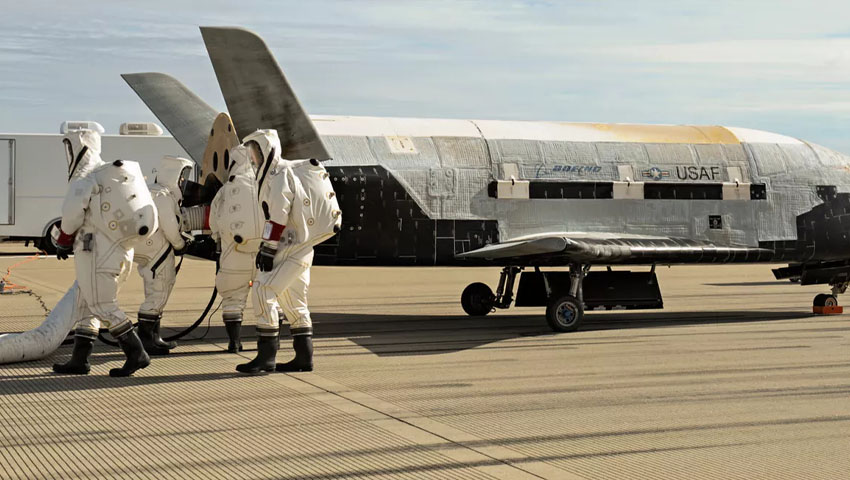
The X-37B’s sixth mission is the first to use a service module with additional payload capability to support a variety of experiments for multiple government partners. The mission will deploy FalconSAT-8, a small satellite developed by the US Air Force Academy and sponsored by the Air Force Research Laboratory, to conduct experiments on orbit.
Further, two NASA experiments will study the impact of radiation and other space effects on certain materials and seeds used to grow food. Another experiment by the Naval Research Laboratory will transform solar power into radio frequency microwave energy, which could then be transmitted to the ground. In addition, the mission will test reusable space vehicle technologies.
Jim Chilton, Boeing Space and Launch senior vice president, the prime contractor for the X-37B, said, “The X-37B has shifted the paradigm and redefined efficiency in space development.”
The X-37B first launched in April 2010. Originally designed for missions of 270 days duration, the X-37B has set endurance records during each of its five previous flights. Most recently, X-37B spent 780 days on orbit before returning to Earth in October 2019.
“The rapid technology advancements enabled by the program will benefit the entire space community and influence the next generation of spacecraft design,” Chilton added.
The X-37B program is a partnership between the Department of the Air Force Rapid Capabilities Office and the United States Space Force. Boeing program management, engineering, test and mission support functions for the Orbital Test Vehicle program are conducted at Boeing sites in Southern California and Florida.
The vehicle features many elements that mark a first use in space, including:
- Avionics designed to automate all de-orbit and landing functions;
- Flight controls and brakes using all electro-mechanical actuation, no hydraulics on board;
- Built using a lighter composite structure, rather than traditional aluminum;
- New generation of high-temperature wing leading-edge tiles and toughened uni-piece fibrous refractory oxidation-resistant ceramic (TUFROC) tiles;
- Advanced conformal reusable insulation (CRI) blankets; and
- Toughened uni-piece fibrous insulation (TUFI) impregnated silica tiles.
The X-37B has a lifting body-style and landing profile that is similar to the Space Shuttle, but the vehicle is one-fourth the size. The X-37B design combines the best of aircraft and spacecraft into an affordable system that is easy to operate and maintain.
The on-orbit duration of the X-37B will vary based on flight requirements but has the ability to perform flights lasting up to 270 days.
Boeing’s X-37B is one of the world’s newest and most advanced re-entry spacecraft, designed to operate in low-Earth orbit, 150 to 500 miles above the Earth. The vehicle is the first since the Space Shuttle with the ability to return experiments to Earth for further inspection and analysis.
This United States Air Force unmanned space vehicle explores reusable vehicle technologies that support long-term space objectives.
Receive the latest developments and updates on Australia’s space industry direct to your inbox. Subscribe today to Space Connect here.









